
Can conservationists save the capercaillie – without killing its predators?
In Scotland, a fierce debate is underway over how to stop an iconic species dwindling to extinction – again.
In 2005, I first visited the Strathspey region of Scotland and fell in love.
The deep, resinous Caledonian Forest was as evocative as it was tantalising. For someone raised in the ecological silence that is most of southwest England, the open glades and forest margins provided a very different baseline for how varied and alive the landscape could be.
One bird captivated me more than any other: the capercaillie.
The bug was caught early. I remember stalking for hours – days – through Abernethy Forest trying to see my first. It was outrageous to think that such an inconceivably large bird could be so elusive as to reduce birdwatchers to despair. It also seemed inconceivable that Britain still held this giant at all.
In fact, capercaillies are Britain’s oldest rewilding success story, at least for now. Pleistocene fossil records remind us that these giant birds not only once inhabited Scotland but even England and Ireland. Over time, however, the species receded slowly into the last suitable habitat, before it was eventually vanquished by hunters around 1785.
And yet, more than five decades later, they would return, reintroduced by the Marquis of Breadalbane, a man ahead of his time. The aristocrat released capercaillies into different forests, so that populations would eventually join up. It was spectacularly successful. By the 1970s, it was estimated that 20,000 capercaillies were present in Scotland’s forests.
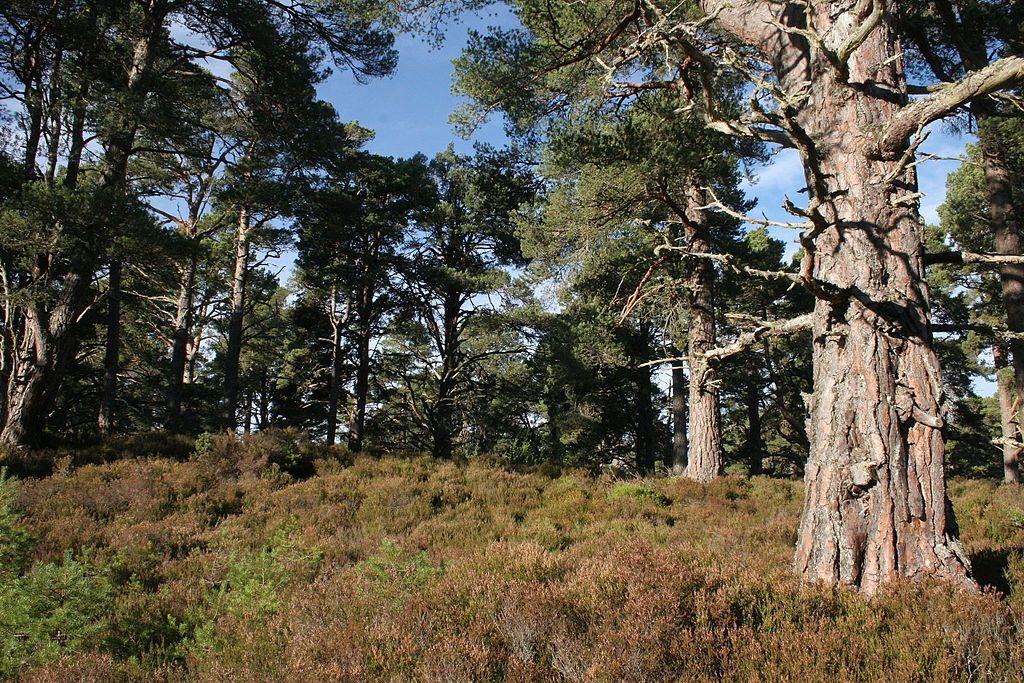
Since then, numbers have crashed once again. There are now thought to be fewer than 700 capercaillie left in Scotland. You can walk through large areas of Caledonian pine not being eluded by capercaillies but bereft of them. In the midst of this decline, a fierce debate over the future of this bird has emerged, pitting rewilding advocates against those who would prefer a more interventionist approach.
In February, NatureScot published a report that highlighted how rising populations of predators, particularly pine martens but also crows and foxes, were contributing to the decline of capercaillie across Scotland. Reducing the numbers of these animals would, it concluded, “rapidly improve the breeding success of capercaillie.”
Pine martens, beloved of many naturalists, are generalist predators, but are especially adept at finding eggs in nests, whether those of goldeneye in a nest box or capercaillie on the forest floor; they also take capercaillie chicks. But these mammals have also suffered from centuries of persecution. Numbers have only recently started to recover, and they have the same level of legal protection as the capercaillies themselves.
Still, for many land managers on the ground – especially gamekeepers – the NatureScot report validated concerns that had long been ignored.
“The Scottish Government’s report is crystal clear, but it’s clear there are dust-clouds of obfuscation gathering around the core issue of predator control,” wrote Patrick Laurie, a farmer and writer who lives in Galloway. “Several major stakeholders simply don’t want to face this truth. Instead, they persist with the impossibly naïve cliché that ‘nature will find a way’, while others are saying that control needn’t mean lethal control, and perhaps it’s possible to trap and relocate specific martens which pose problems.”
So, has the battle to save the capercaillie also become a countryside class war – or merely a case of scientific divergence?
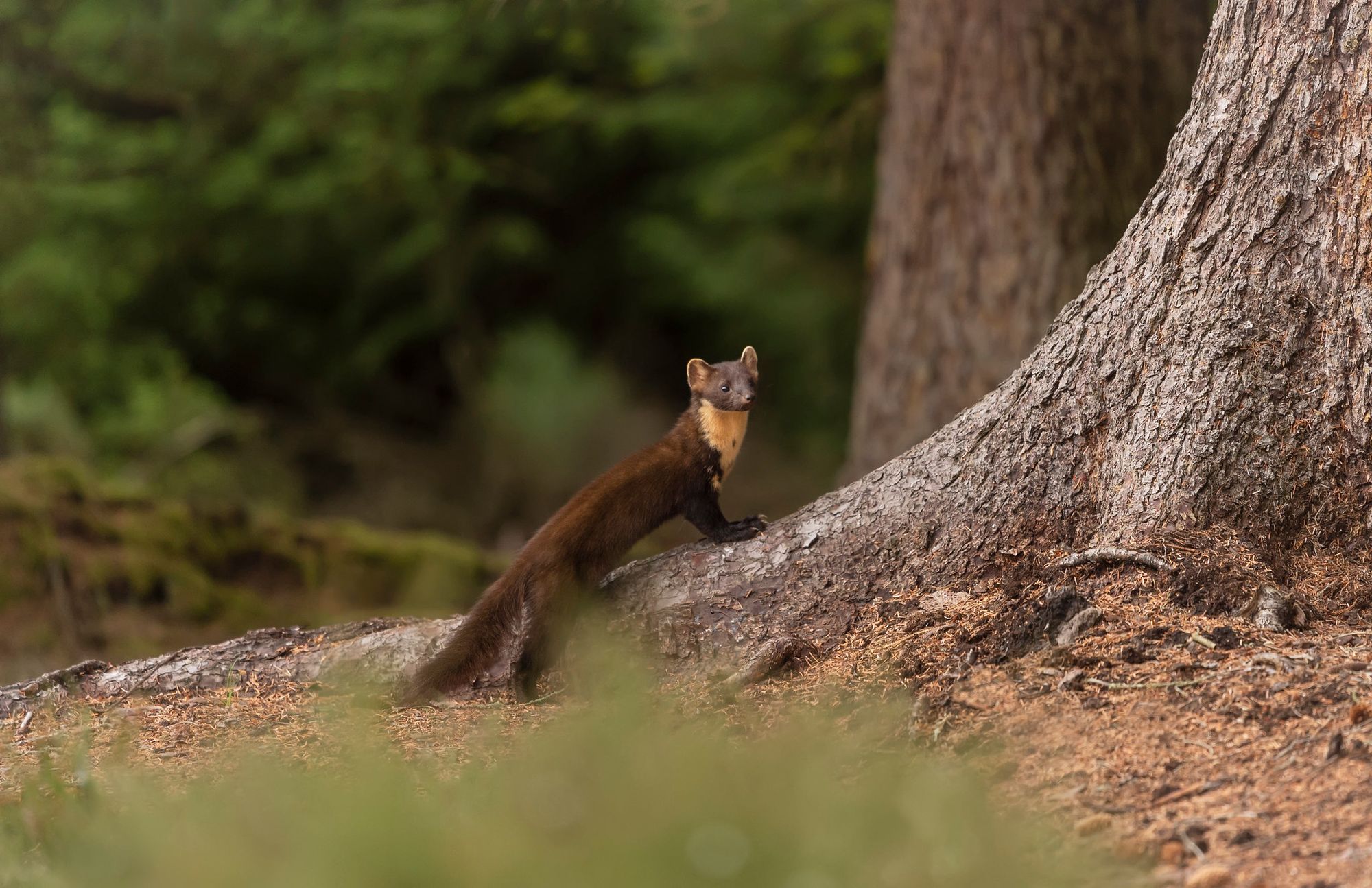
In many respects, the capercaillie’s decline is an odd case. In the majority of UK cases, birds are facing extinction because of three key factors. One: their food is not present. Two: their habitat is not optimal. Three: the extent of that habitat is not enough to preserve their numbers.
And yet, on first inspection, none of these appear to apply to the capercaillie. The forests that capercaillies haunted in the 1970s have not been cut down. The woodland extent remains the same, and some foresters argue there is now more suitable habitat than before. Evidently, that is not how the capercaillie sees things.
Capercaillies are unique in a number of ways, all of which make them fragile. Unlike the majority of British birds, which tolerate people very well provided they have sufficient food and habitat, capercaillies are true wilderness creatures.
They hate disturbance, and their leks, where males commune for the right to mate, take place at dawn only in undisturbed clearings, or, these days, sometimes on quiet forestry tracks. Leks can be disturbed by someone walking half a kilometre away; dogs can be even more detrimental. If capercaillie leks are disturbed, nesting females abandon entire areas. There are now large areas of Abernethy, for example, with no capercaillies in spite of having perfect habitat. Only great bustards or golden eagles dislike human disturbance as much.
This is much more of a problem in the UK, with its keen birders and walkers, than it is in the larger and much less populated forests of Fennoscandinavia. Disturbing a capercaillie lek is a legal offence, although one that is hard to enforce, and requests to keep away sit uneasily with a nation accustomed to public access and relatively tame wildlife.
But while leks, carried out mainly in April into early May, make these social but extremely shy birds especially vulnerable in a busy Scotland, this is far from the only cause of their decades-long decline.
Capercaillie have two key needs in the forests where they breed. Firstly, they need mature pine woodlands, where they can roost, safe off the ground, outside of the lekking and breeding season. These can grow in the form of forestry plantations, like Inshriach, or older, free-styled habitats, such as the wood pastures of Rothiemurcus. In almost all capercaillie populations, no other tree except pine appears to suffice.
Secondly, capercaillies need a rich layer of bilberry – or blaeberry, to use the Scottish word – which, in turn, requires some sunlight to penetrate the forest floor. In autumn, bilberry provides berries, alongside nesting and feeding cover, and in summer, a rich profusion of small insects for chicks.
These two habitat requirements appear fairly universal, being shared by large populations of capercaillie across Scandinavia as well. Like any species, the greater the extent of prime, undisturbed habitat, the more capercaillies you have. This, however, is where subtle changes have occurred – changes hard to perceive, because they have taken place over many years.
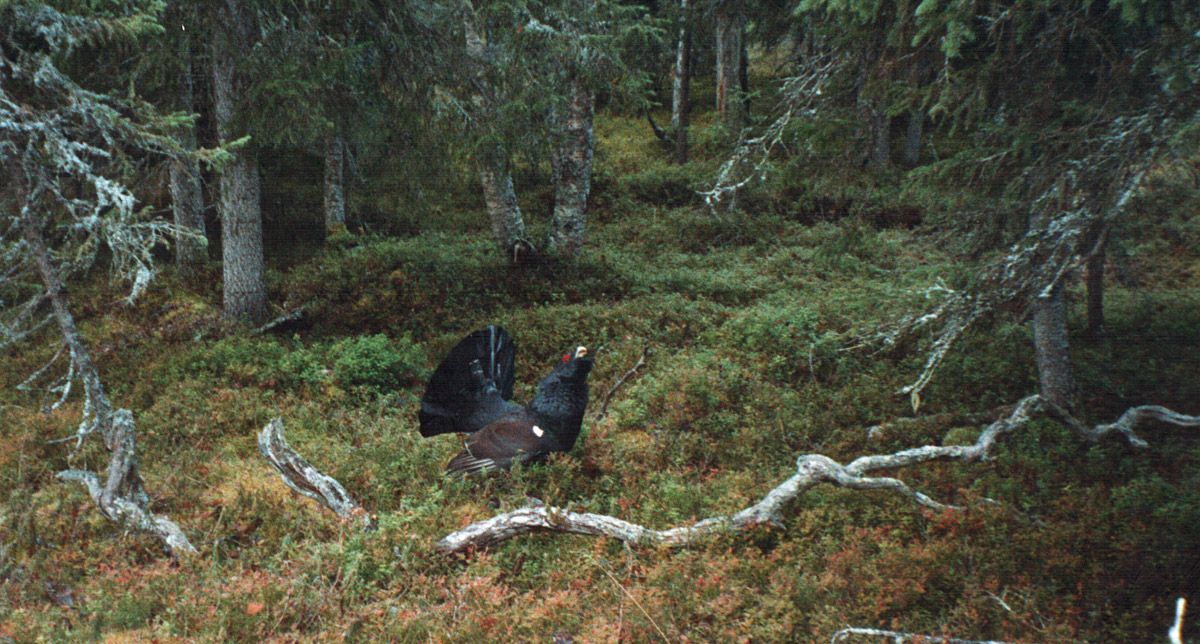
“In the seventies, the forests here were lightly grazed by cattle. This kept the bilberry short and sweet, exactly how capercaillies like it,” reflects the ornithologist Roy Dennis, an instrumental force behind the return of species like the white-tailed eagle to the UK.
Since then, however, the removal of cattle from the woods has created rank, long, unbroken heather, and the bilberry carpet has become less ideal. Now, the RSPB has started reintroducing cattle into Abernethy Forest – seeing, as they do, an increase in capercaillie.
A third factor in capercaillie decline is cold damp weather, which inundates the chicks and dramatically reduces their fledging success, as well as their ability to find food. We are now seeing more and more of such conditions during the summer, although there is little, in truth, that anyone can do now to remedy this problem.
When it comes to predator numbers, however, we need not be quite so helpless. The Game & Wildlife Conservation Trust is advocating for the non-lethal control of pine marten, through translocations to other parts of the UK, alongside a cull of foxes. “We have prevaricated and avoided the inconvenient truths,” says Rory Kennedy, GWCT’s Scotland director. “If we want to save our capercaillie it really is now a case of now or never.”
But others argue that capercaillie have existed beside their predators for thousands of years – that nature, when it has enough room, deals with predation very well. No one seriously suggests that the wildebeest of the Serengeti are ‘threatened’ by lions, nor suggests any interventions to remove these predators.
Similarly, pine martens and capercaillies co-exist in Scandinavian and Estonian forests: not one scientist has ventured that one species might wipe the other out. Predation, experts concur, only becomes a problem when species become isolated – at the end of their life expectancy in the landscape.
Instead, some suggest that we should look to rewilding rather than traditional conservation to save this threatened bird.
“The capercaillie has been studied to death,” says Dennis. “We’ve ignored all the big picture issues and got trapped in the details. We need to step back and take a much wider view. The first obvious issue is that the habitat was never truly large enough – we need more of it.”
Ultimately, Dennis believes that we need to take an ecosystem-led view: cattle in our woodlands will create the insect-rich bilberry the capercaillie needs. But he also thinks that we need to be more honest about the impact of another keystone species: human beings, and what we perceive as our rights.
Strathspey, the capercaillie’s greatest and now last stronghold, is now filled with people. Electric bikes, ramblers, dog-walkers and runners may all be exercising their right to roam, but their presence is not appreciated by the capercaillie. In any other country, there would be areas where nature is left in peace, and human access highly restricted. “In the seventies, you would see perhaps one to two people the whole day in the forests here,” says Dennis. “Now, it’s a constant stream.”
He, too, is cautious about the impacts of small predators, like the pine marten, which would not be so common in an ecosystem that had retained its larger carnivores. “We cannot have conservation by sentimentality: meso-predation is a genuine problem for the capercaillie,” he adds.
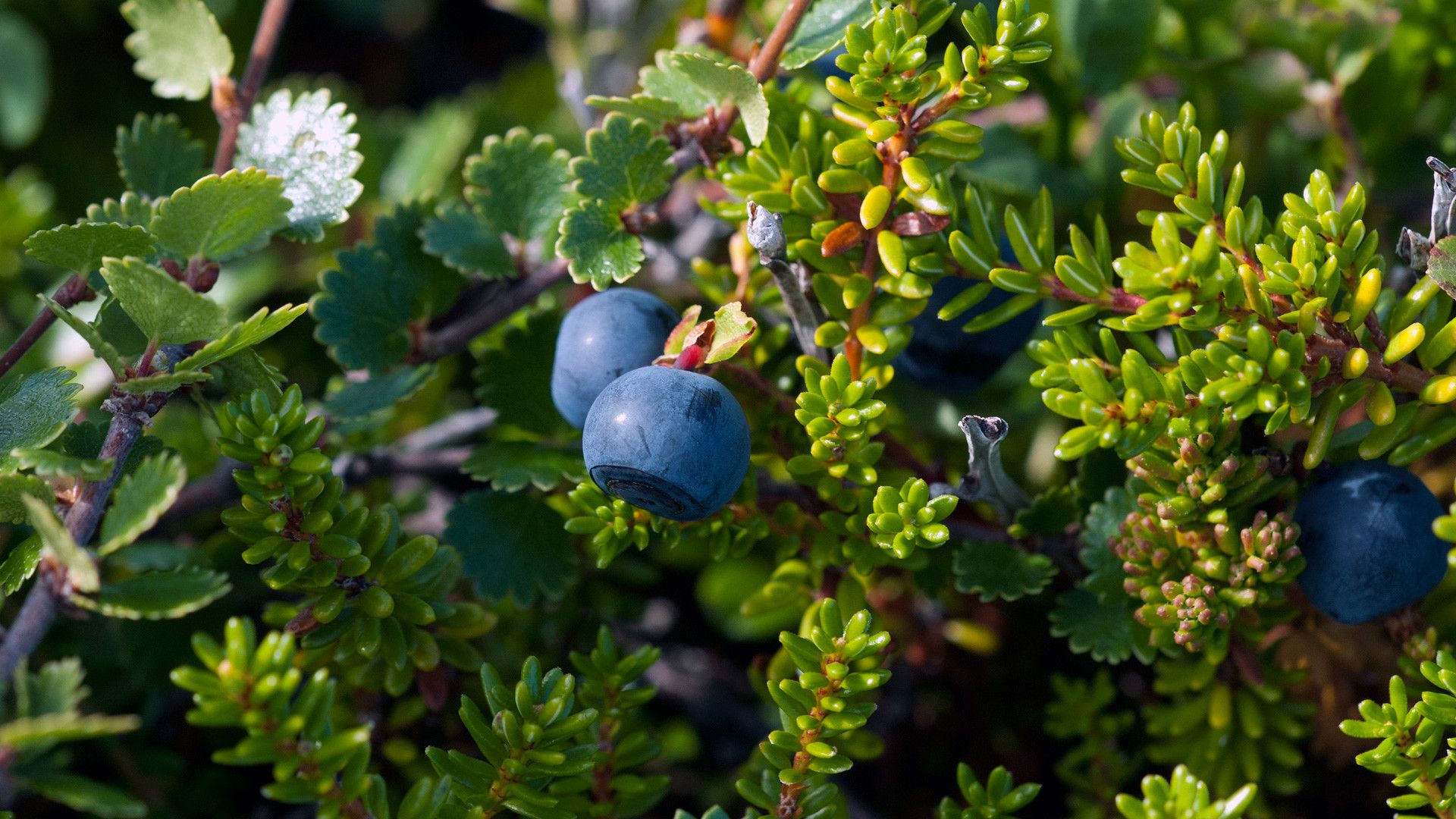
In my personal view, we can save the capercaillie. Today, there are two sites in Scotland that are pointing the way forward.
The first site is a private estate in western Strathspey. I know it well but will not name it – because it has an excellent population of capercaillie. Its hard-headed land managers are deliberately keeping under the radar. Few people go here due to its terrain, and predator numbers are very carefully controlled by gamekeepers. In combination with a large tract of ancient Caledonian pinewood, rich in berries and quiet clearings, these conditions have enabled the species to thrive.
Even so, intensive management may only work for so long. The second site is very different – in ethos, management, and scale. That place is Glenfeshie: an ecosystem restoration project of 40,000 acres.
Owned by the billionaire Anders Povlsen, it has, like any ambitious land restoration project, been praised and vilified by a range of parties. A ruthless deer cull has seen one of the largest areas of naturally regenerating Caledonian woodland take hold, with aspiring birches bursting up beside young pines across the glen – but has also been called ‘unsporting’. Private ownership has allowed an extreme efficiency of operation, unshackled by endless committee meetings or dilution of purpose. For others, the wealth of its owner has come to symbolise wider inequalities in who owns Scotland.
The capercaillie, however, seems unlikely to share such political concerns. Each year, its population here appears to be slowly increasing, without any prescriptive capercaillie management at all.
The Glenfeshie team are not managing for capercaillie: they are managing to restore the entire landscape. There is now talk of bringing horned Highland cattle back into the glen, to compete against tree growth and create glades and cropped areas within the forest, just as the now-extinct aurochs would have once done. Interestingly, Glenfeshie is full of predators – but it is also very large, and some areas are barely visited, even now.
For many millennia – before the arrival of gamekeepers or NGOS – this expanding wilderness is what all capercaillie habitat in Scotland would have looked like. It is easy to forget that this species does not need us at all, just as many capercaillies in Finland, Sweden or Norway do not rely on any form of human management, tailored to their needs, to survive.
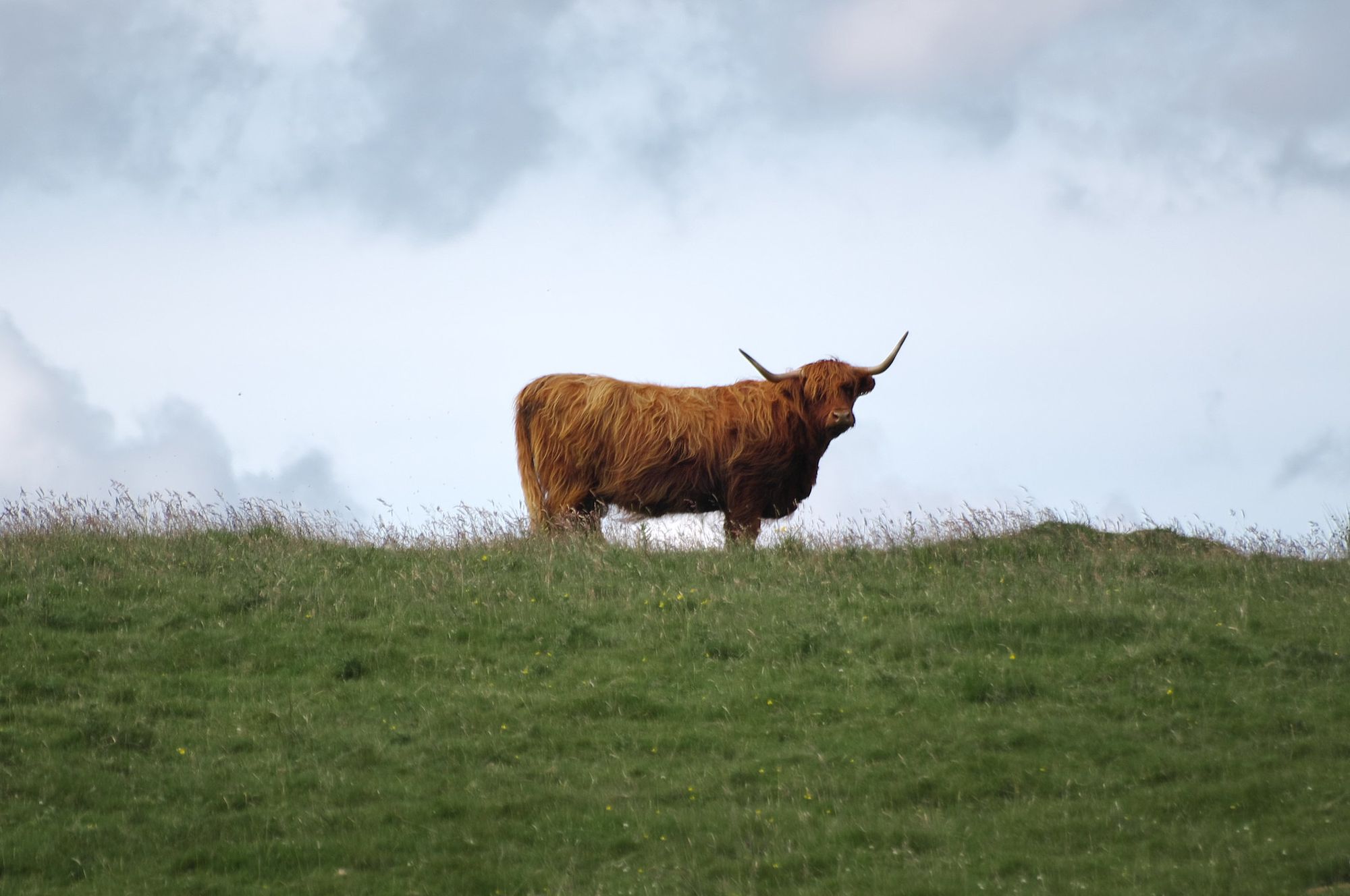
So where does all this leave us? In my view, the critical decline of the capercaillie exemplifies all that is wrong in UK conservation – but also draws us towards all that could be right about restoration.
Gamekeepers are right that fox numbers are problematic but forget that the lynx is the natural predator of foxes, helping to keep their numbers low in the capercaillie-rich forests of Estonia.
Conservationists are also right that we need to manage woodlands, but can sometimes forget that cattle, smashing through heather and creating open pathways for chicks, have been doing this for longer than humans – or that too many deer, in the absence of wolves, need to be heavily controlled. Increasing the scale of the available habitat, through the natural regeneration of woodlands, now seems to be the most important long-term task of all.
Advocates for rewilding, such as myself, would love to see a world where lynx control foxes and pine martens; where goshawks control crows; where cattle create capercaillie habitat; and natural regeneration expands that habitat dramatically.
But we rewilders, too, can sometimes neglect to mention that in the short-term, humans need to play some of these roles, culling common predators to save a rare species. We shouldn’t be too swift to condemn the gamekeepers and estate owners who are playing their own part in preventing the second disappearance of Scotland’s most iconic bird. As Dr Carl Jones, one of the world’s leading avian conservationists, once told me: “Never let sentiment towards a common predator drive a rare bird to extinction.”
To save the capercaillie, we need to blend short-term pragmatism with a remembrance of a wilder past, when these birds survived in huge tracts of suitable pine woodland growing across Scotland, co-existing with a wide array of predators. Only this will create the space for capercaillie to play hide-and-seek with infuriated birders for many centuries to come.
With thanks to the Pebble Trust for providing the funding for this article.
Subscribe to our newsletter
Members receive our premium weekly digest of nature news from across Britain.
Comments
Sign in or become a Inkcap Journal member to join the conversation.
Just enter your email below to get a log in link.








